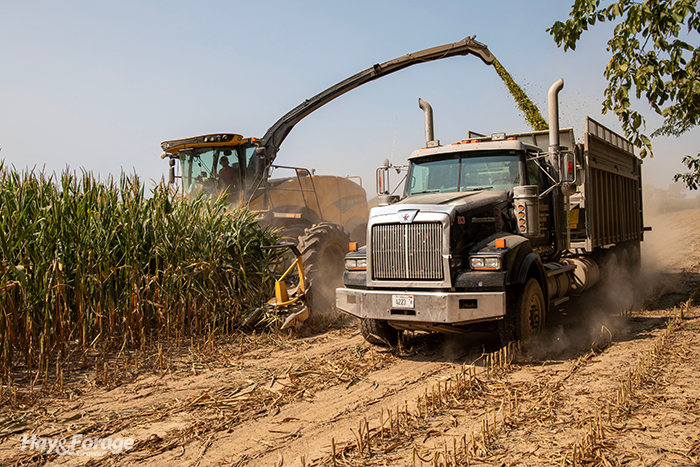
You can’t always have it all, especially when it comes to forage quality and yield. This trade-off is often debated to determine harvest timing, but it exists in terms of cutting height, too.
At the International Silage Conference last month in Gainesville, Fla., Cole Diepersloot with the University of Wisconsin-Madison discussed the effects cutting height can have on corn silage nutritive value and yield. Even though leaving a few more inches of stubble height in the field reduces total yield, Diepersloot contended doing so can improve corn silage quality.
“If we increase the cutting height of silage during harvest, we are going to leave more of the more fibrous and less digestible part of the stalk in the field and we are going to increase the proportion of leaf and grain within the remaining silage that we actually harvest,” he said.
Diepersloot presented a meta-analysis of 33 published research articles on corn silage cut height. When cut higher, corn silage had a greater proportion of leaf and grain, so fiber digestibility and starch concentration were inherently greater. Diepersloot said this combination creates a more energy-dense feed for dairy cattle that can result in higher intake. However, the yield drag can be daunting.
“If you were to increase cutting height by 10 centimeters, which is a pretty small increase as we look at practical applications, we would be decreasing our dry matter yield by over half a metric ton per hectare,” Diepersloot said. “As you can imagine, that can be pretty significant and adds up pretty quickly if a farm decides to harvest all of their corn silage at a greater cutting height.”
This leaves farmers with a few options.
“If a farm is looking to increase cutting height in order to improve their corn silage quality, they need to look at growing more acres to compensate for the slightly lower yield or look at other management strategies in order to offset the decrease in dry matter yield,” Diepersloot suggested.
Corn maturity matters
There are other interacting factors that influence the nutritive value of high-cut corn silage, including maturity at harvest. In fact, Diepersloot noted more mature plants with greater dry matter (DM) may show more pronounced benefits from being cut higher than less mature corn.
From the 33 studies comprising the meta-analysis, the researchers divided high-cut corn silage into three categories based on DM at harvest: low DM less than 32%, average DM between 32% and 37%, and high DM greater than 37%.
The biggest improvement in fiber digestibility was observed in the high DM category, which was to be expected since fiber digestibility of cornstalks declines as plants mature. However, starch concentration improved the most in the low DM category, which was the opposite of what the researchers predicted, since starch content rises with plant maturity. The team suspected stay-green genetics may be influencing their results.
“If you’re not familiar with stay-green genetics, essentially what that means is the stalk of the plant stops maturing and slows the increase of dry matter as the other portions of the plant continue to mature,” Diepersloot explained. “For our meta-analysis, we likely had some low dry matter hybrids that were high in starch concentration.”
A BMR replacement
Diepersloot noted raising corn silage cutting height may be a strategy to replace brown midrib (BMR) corn silage since these hybrids will be phased out over the next several years. A higher cutting height results in many of the same outcomes as harvesting BMR corn silage —higher neutral detergent fiber digestibility (NDFD) despite lower yields — but this approach presents an added benefit to starch concentration.
“Unlike BMR corn silage, which typically has lower starch concentrations, harvesting a higher cutting height actually increases starch concentration, and therefore, may increase the energy density of high-cut corn silage more than BMR alone would,” Diepersloot stated.
With that said, he contends more research is needed to evaluate the trade-offs between nutritive value and yield before making recommendations to replace BMR hybrids with high-cut corn silage

